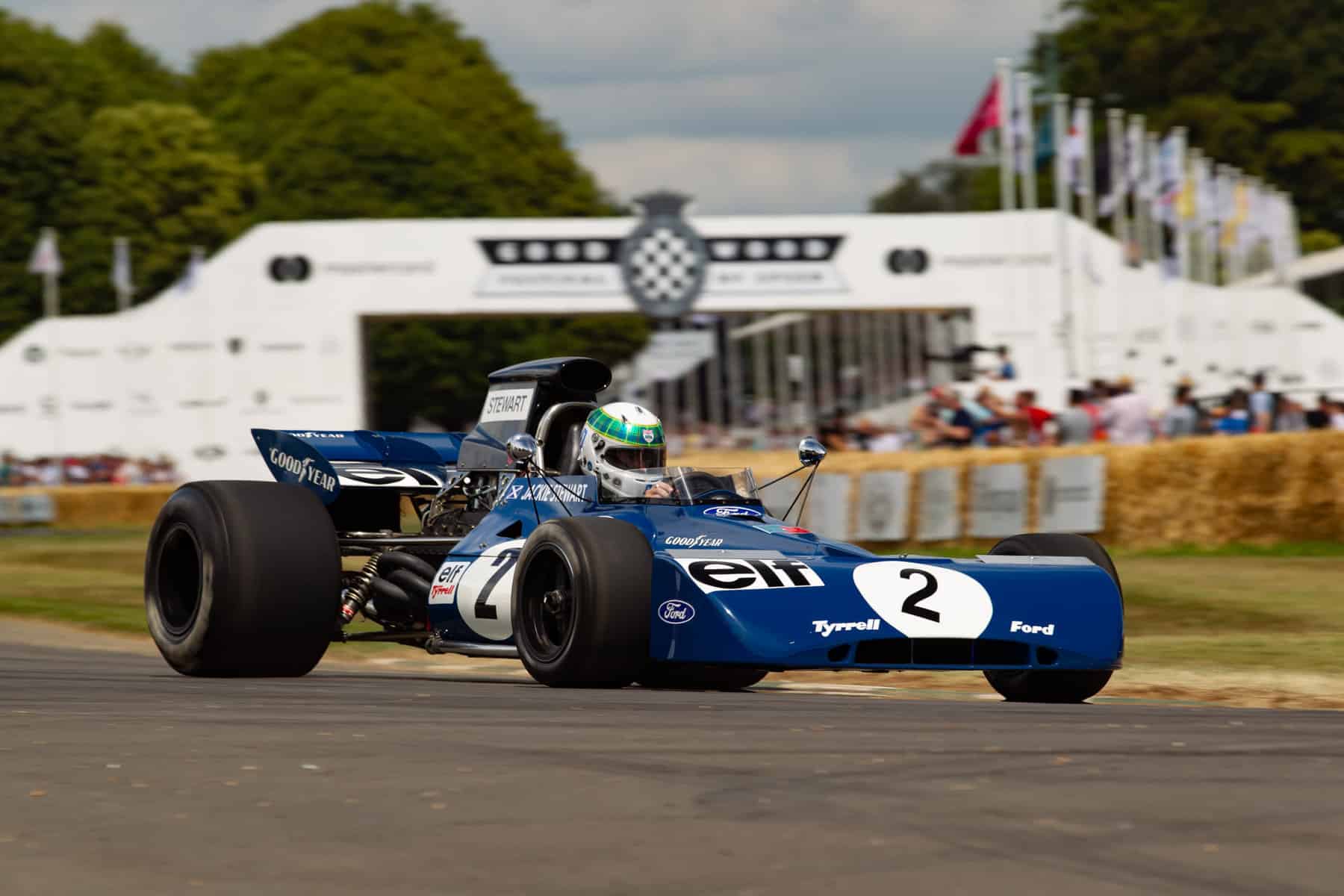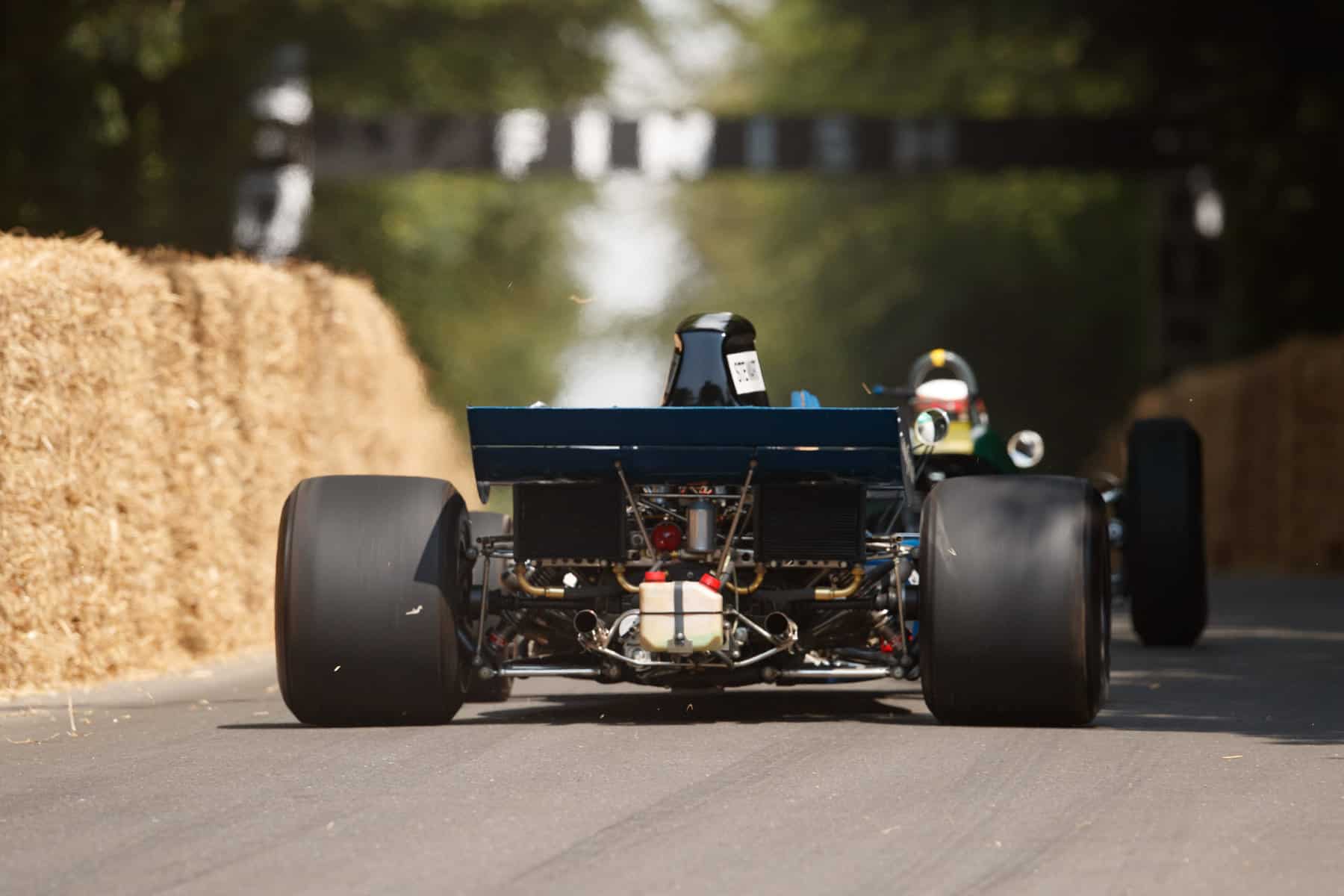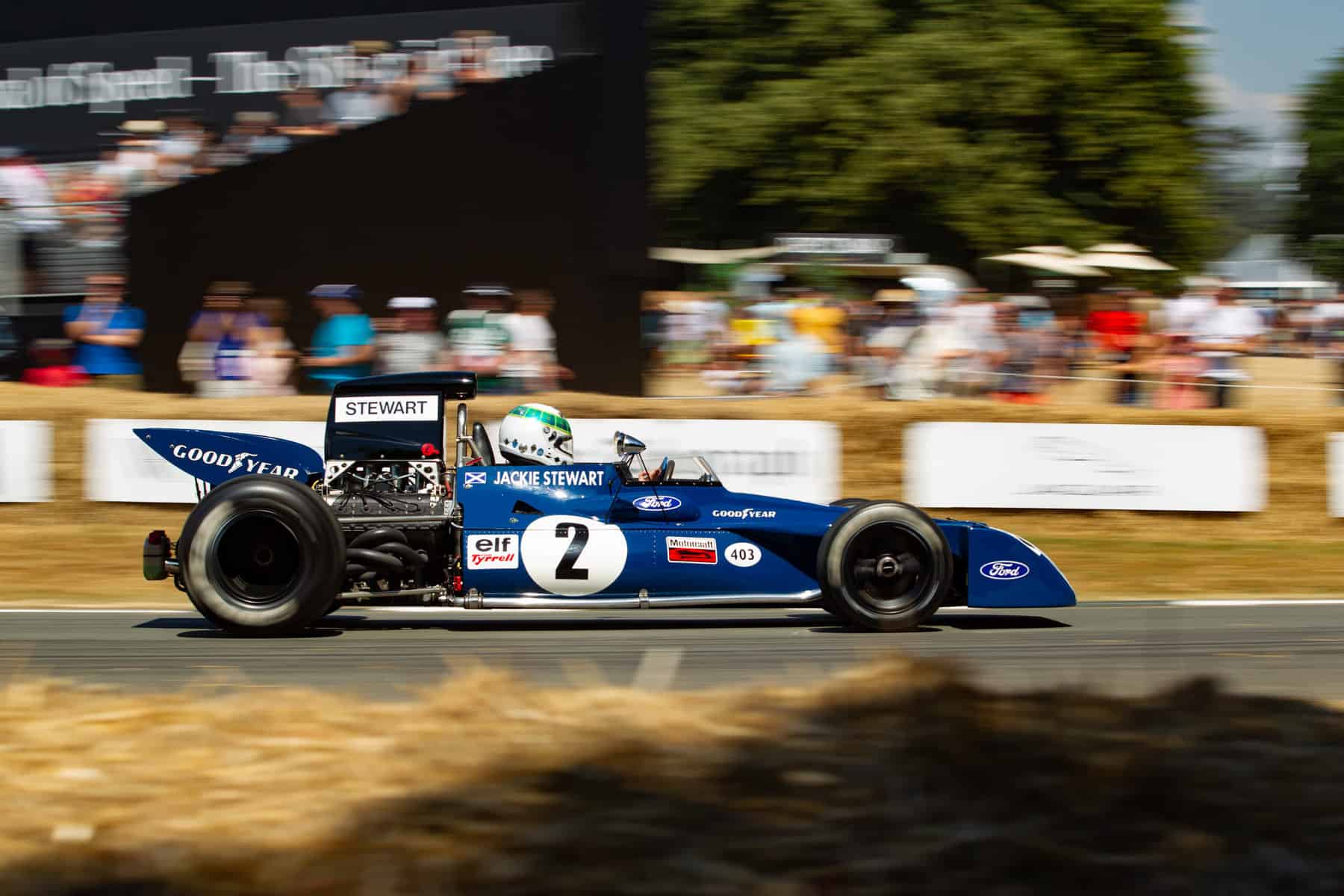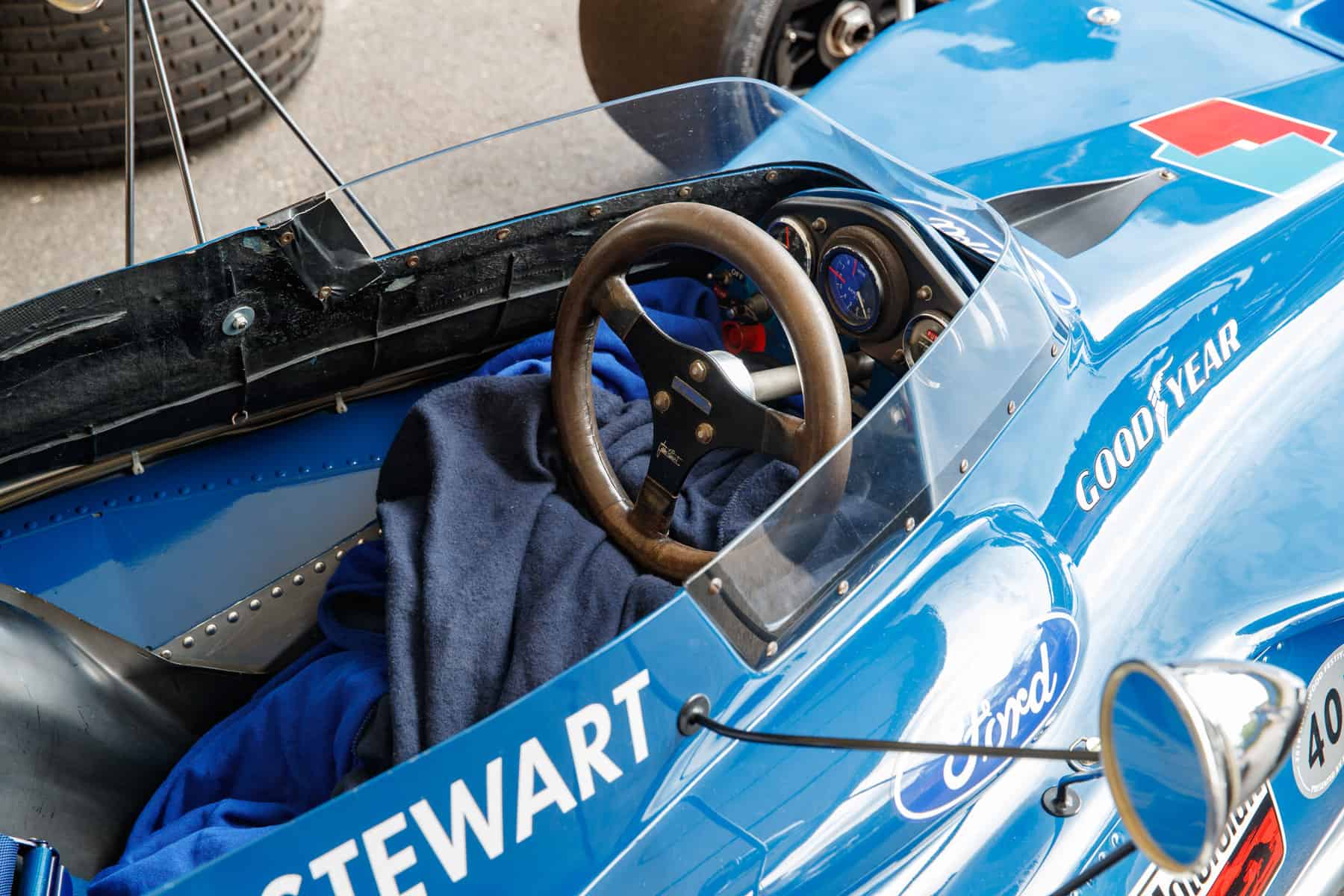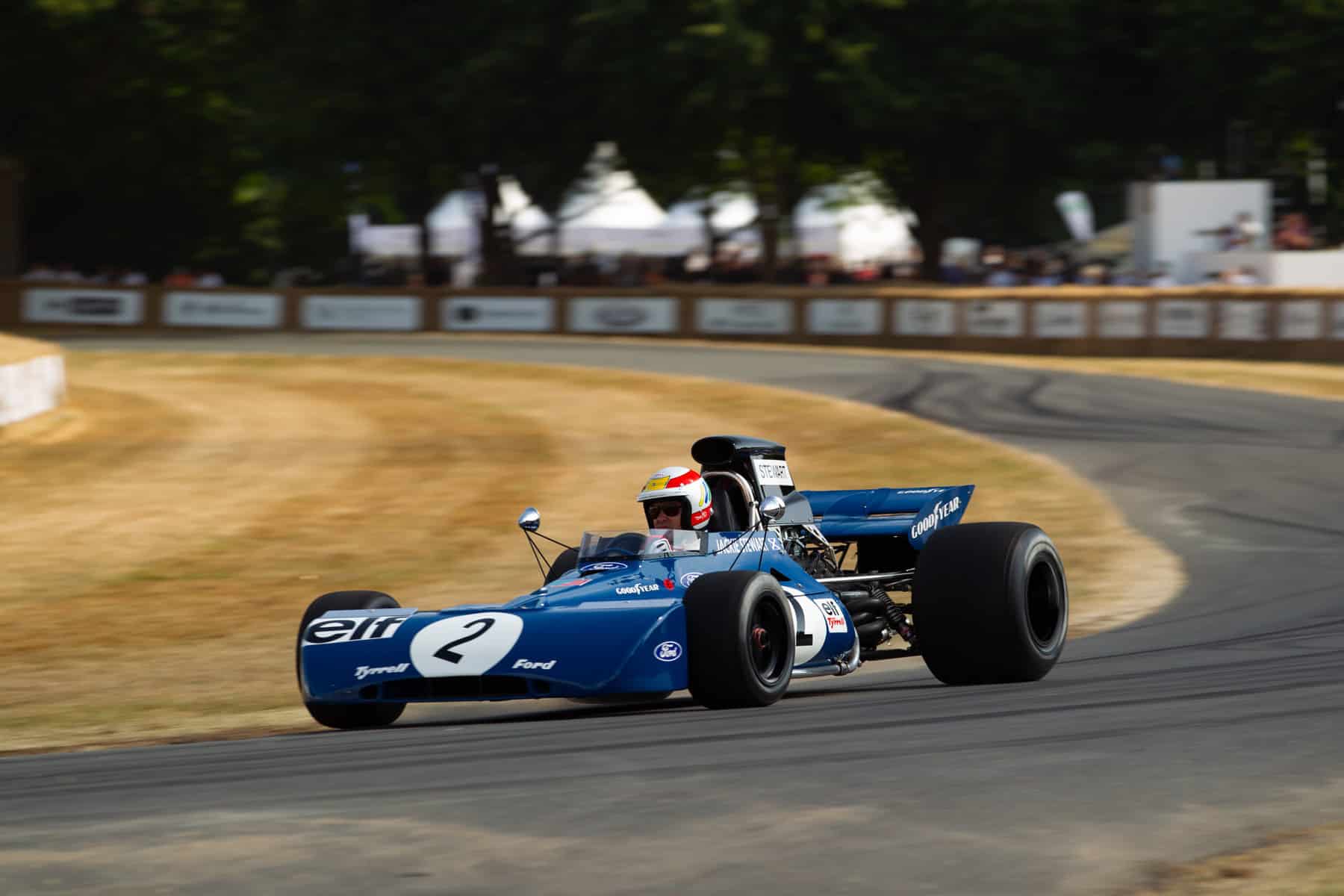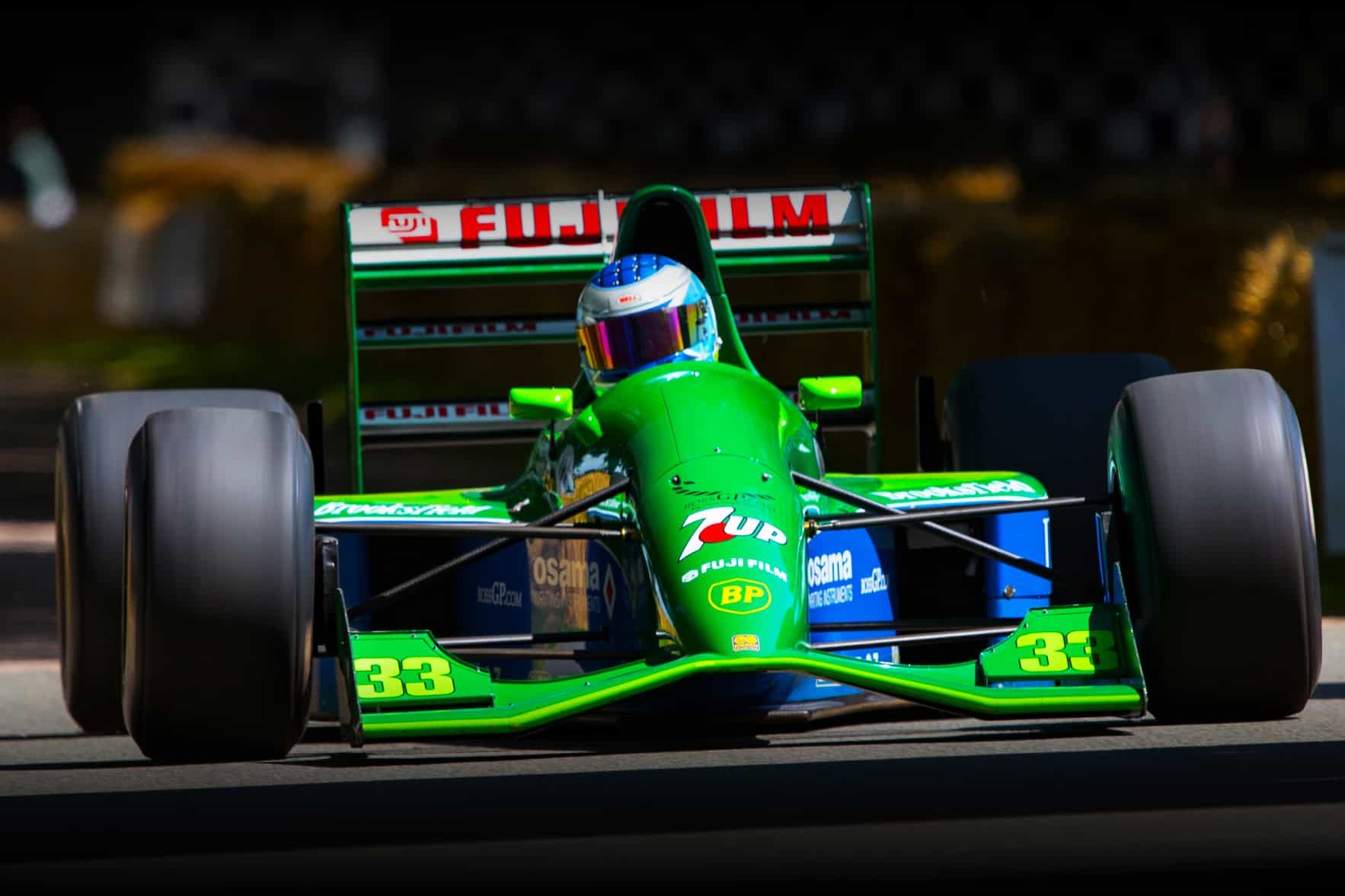The Iconic Tyrrell 003
One of the most successful Formula 1 cars of all time
BY: WOUTER MELISSEN
“Humble beginnings” is a popular platitude but in considering the origins of the all-conquering Mercedes-Benz Grand Prix team, it is actually an understatement. Based out of Brackley, England, the team that has operated under the Mercedes-Benz name since 2010 actually debuted as a constructor at the 1970 Gold Cup as the Tyrrell Racing Organisation.
Granted, Ken Tyrrell had successfully run Jackie Stewart’s World Championship–winning effort with the Matra MS80 in 1970. The car that the Scotsman raced at Oulton Park, however, was drawn up by designer Derek Gardner alone, on his kitchen table, and then built up in a surplus army barracks in Ockham. Just over a year later, Tyrrell and Stewart were World Champions with what was literally only the third car built by the fledgling constructor.
Ken Tyrrell had been active as an entrant in lower formulae since the late 1950s and his association with Jackie Stewart dated back to 1963. The two were separated briefly when Stewart moved up to Formula 1 in 1965 but they reunited when Tyrrell partnered with Matra to help run their Formula 1 effort in 1968. It was an instant success, as Stewart managed to win three Grands Prix in the Ford Cosworth DFV-engined MS10 that year. Matra had big plans, including the construction of a proprietary V12, which would make the car all French. While the engine was developed in France, Tyrrell was entrusted with the new-for-1969 MS80. Stewart scored five victories in eleven starts that year. Matra insisted that from 1970 only the V12 engine was used but Tyrrell believed that keeping the tried and tested Cosworth V8 would be a much better idea. Matra would not budge, so Tyrrell went his separate way, taking his protégé Stewart with him.
While Tyrrell was now free to use the engine of his own choosing, he still needed a car to fit it in. What perhaps helped him make his bold move was the arrival of specialist constructor March, who offered Grand Prix cars to customers from the 1970 season onwards. It was the Cosworth DFV engine that made this a lot easier than it seemed. The engine, together with the Hewland gearbox, could serve as a fully stressed member of the chassis. That meant that any constructor using the DFV would only need to build half a car, to support the front suspension and house the driver and fuel tank. The engine was bolted directly to the rear bulkhead to form the second half of the chassis. The “H” in the March name referred to Robin Herd, who had previously designed hugely successful McLaren racers. So it was no surprise that Ken Tyrrell ordered two March 701s for his Elf-backed team to run in 1970.
At the season opening South African Grand Prix, defending World Champion Jackie Stewart immediately seemed to vindicate his and Tyrrell’s bold move by grabbing the pole position. Stewart’s closest rival was Chris Amon in the V12-engined Matra, who was over half a second slower. In the race, Stewart was eventually beaten by Ferrari’s Mario Andretti but still finished an encouraging second in what was the very first Grand Prix for March. Stewart then drove the car to victory in the non-championship Race of Champions before grabbing its maiden Grand Prix win in the Spanish Grand Prix at Jarama. With two wins in three starts, it seemed to be plain sailing for the new partnership but as it turned out that was not the case. Stewart actually did not like the March, which he found bulky and difficult to drive. What he, or just about anyone else, did not know at the time was that he would be out of what he reportedly referred to as a “bucking bronco” sooner than he expected.
In absolute secrecy, Ken Tyrrell had called in the services of Derek Gardner to design a Tyrell Grand Prix car from scratch. This was another surprising move as Gardner’s involvement in Formula 1 had been limited to developing a four-wheel drive system for Matra during the 1969 season. This is also how the two men met. At that time, he had been employed by all-wheel drive specialists Ferguson. Gardner had never designed a Grand Prix car before, which allowed him to do the work for Tyrrell without anyone else taking much note. He was even able to contact other designers and ask them questions without arousing suspicion. What would become the Tyrrell 001 was drawn up on Gardner’s kitchen table and even Stewart was not in on the secret. The first sketches were made in February of 1970, so predate Tyrrell’s first outing with the March 701.
As part of the design process, a full-size mock-up was built up in Gardner’s garage. When this was done, the time had come to let Stewart in on the secret. He was flown in from a tire test at Goodwood for a brief visit with Gardner. Stewart barely spent an hour with Gardner but left impressed with what he saw despite the unlikely setting. For Gardner, it was also a valuable meeting as he now had a better understanding of what Stewart liked in a car. He pressed on with his design to create a relatively short car with a low center of gravity. This made for an altogether nimbler car than the March that Stewart had been wrestling with. The overall layout of the car was fairly conventional, with a single, front-mounted radiator, a bathtub style monocoque chassis, and full-width front and rear wings.
For Ken Tyrrell, it was crucial that the car was ready in time for the Oulton Park Gold Cup, scheduled for that August. Although not a round of the World Championship, it was the final Formula 1 race held on the British Isles that year and also the last opportunity to wow potential sponsors. Meeting this ambitious deadline was only possible by outsourcing some of the work to the likes of legendary panel-beater Mo Gomm, who built the monocoque. With all the major components ready to go, it was time to start assembly, which was also the moment most of the Tyrrell Racing Organisation staff actually became aware of the project. The first Tyrrell was built up in a workshop that was made up of two surplus Army barracks. The state of the facility was certainly no reflection of the talent held within and car was indeed ready in time for the Gold Cup.
Simply dubbed 001 after its chassis number, the first Tyrrell had a rather inconspicuous debut. There were a plethora of issues that even prevented Stewart from participating in qualifying. Having to start from the back of the grid for the first race, Stewart had to deal with a stuck throttle on the opening lap and then suffered a piston failure that prevented him from even starting in the second heat. From a performance perspective, Tyrrell’s first outing as a constructor was nothing short of a disaster. Crucially, Stewart felt right at home in the 001 and was convinced that once the bugs were ironed out, it was exactly the car that he had been asking for.
Tyrrell brought the 001 to Monza for the Italian Grand Prix but Stewart was forced to race the March once more after a stub axle failed. Next up was the Canadian Grand Prix at Mosport. Qualifying the car on pole position vindicated Stewart’s belief in the car. Sadly, another stub axle failure saw the Scotsman retire from the race. Stewart started the next two Grands Prix from second but teething reliability issues prevented the Tyrrell from reaching the finish during the 1970 season. Tyrrell pressed on with the 001 for the fly-away races that kicked off the 1971 World Championship. At the season opening South African Grand Prix, Stewart started on pole position and managed to finish the race, in second. His French teammate François Cevert lined up in the race in the new Tyrrell 002, which was a sign of things to come.
Cevert’s car was actually the first of two new Tyrrells built for the 1971 season. Very much a development of the original car, 002 and 003 featured a thinner gauge aluminum for the monocoque skin but also additional safety features like sturdier roll-over bars. The 002 also had a slightly longer wheelbase to accommodate for Cevert’s taller frame. Initially, the two new Tyrrells looked similar to the 001 but the shape was developed during the season. From the Dutch Grand Prix onwards, the cars were fitted with a black air-box to force more air into the eight intakes of the Cosworth DFV engine. Another signature change was the adoption of a bluff front wing at the French Grand Prix. This replaced the raised, full-width aerofoil that had been used by Tyrrell from its Oulton Park debut onwards. A third car was built later in the year but only served as a spare.
Even in its original guise, the 003 proved a winner straight out of the box. Starting fourth, Stewart drove the car to a debut victory in the Spanish Grand Prix. This was a remarkable achievement, in what was only Tyrrell’s fifth Grand Prix as a constructor. By comparison, the fastest Matra finished third, nearly a minute down the road from Stewart, and no March made it to the finish. It was the start of a superb run, which saw Stewart win five of the remaining Grand Prix events. At the season finale, the USA Grand Prix at Watkins Glen, François Cevert completed Tyrrell’s dream year by scoring his maiden victory. Stewart ended the year as the Drivers’ World Champion with Cevert in third. In the team’s first full season, Tyrrell finished first in the Constructors’, scoring more than twice as many points as their nearest rival.
As underlined by Cevert’s win at Watkins Glen, the existing Tyrrell remained very competitive, so the team could still rely on the 002, 003, and 004 for the opening rounds of the 1972 season. While a brand-new generation was being developed back at the “shed,” Stewart continued where the team had left off. He won the season opener in Buenos Aires and grabbed pole in the subsequent South African Grand Prix with 003. He won again the French Grand Prix, scoring what was this car’s eighth Grand Prix victory. At that same race, Cevert sampled the all-new 005 but had to race his 002 due to accident damage incurred in practice. Gardner’s latest car was even more compact, lower, and more angular than the first-generation Tyrrells. The 005 and 006 were not bulletproof right from the start but Stewart won the last two races of the year, which set him up perfectly for another successful stab at the World Championship in 1973.
With eight Grand Prix victories, Tyrrell 003 ranks as one of the most successful Formula 1 cars of all time. What makes this achievement even more special is that the vehicle effectively was the very first car ever designed by Derek Gardner for a brand-new constructor. For Tyrrell, this first couple of seasons were the most successful in the team’s history. After 1973, the team would not win the World Championship again until 2009, when it was known as BrawnGP. It was subsequently acquired by Mercedes-Benz and has become the dominant force in the sport, winning the last seven titles.
The iconic 003 was retained by Tyrrell and used for promotional purposes before it was entrusted to the late Tom Wheatcroft. He put it on display for many years in his spectacular Donington Grand Prix Collection museum. More recently, it was acquired by Jackie Stewart’s sons, Paul and Mark, who have regularly demonstrated the car at events like the Goodwood Festival of Speed.
